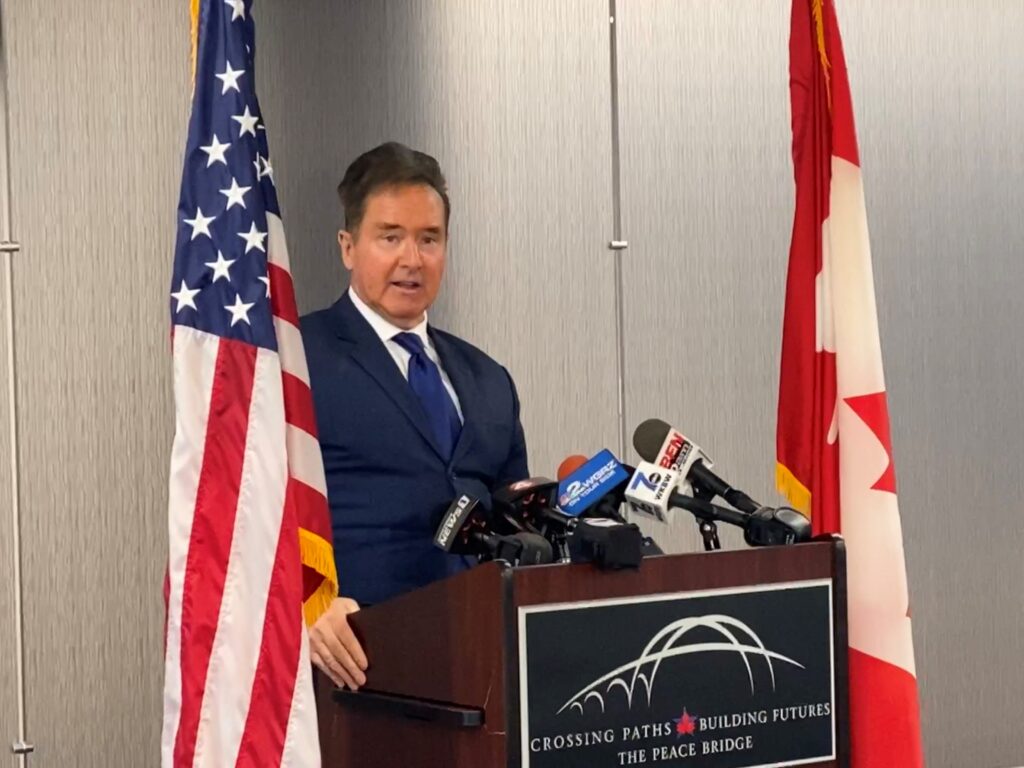
Congressman Brian Higgins (NY-26) has introduced the “Make NEXUS Work Act” legislation to make video conferencing available to new and renewing NEXUS applicants.
Higgins pointed out that U.S. Customs and Border Protection (CBP) has been using remote interviews for renewing Trusted Traveler Program members through a pilot project which began in June of 2021. “The technology, training, and procedures are already in place,” said Higgins. “Let’s expand the program to break down existing barriers and backlogs getting in the way of efficient cross-border travel.”
Under Higgins’ bill, the Secretary of Homeland Security is directed to make video conferencing available for NEXUS enrollment and renewal applicants within 45 days of the bill’s enactment. Like the pilot program, applicants could connect through a smartphone, tablet, or computer from their home on the Zoom platform for a virtual interview.
The Congressman first called for virtual interview implementation in an April 2021 letter to CBP and Canadian Minister of Emergency Preparedness Bill Blair, writing, “It is vital to the economic wellbeing of our citizens and their communities that both the United States and Canada begin planning for the resumption of normal commerce and travel between our two countries. The pandemic has forced both private industry and government alike to rethink old approaches to the workplace and adopt new technologies. Both CBP and CBSA should follow suit and consider the joint implementation of virtual interviews for new NEXUS applications.”
Trusted Traveler Programs, including NEXUS (US-Canada Border), FAST (Truck Drivers Crossing in/out of the U.S. through Canada & Mexico), Global Entry (Entry to the US from International Destinations), and SENTRI (US-Mexico Border), allow for expedited border crossings by pre-screening travelers. New NEXUS applicants were typically required to participate in joint in-person interviews with agents from U.S. Customs and Border Protection (CBP) as well as the Canada Border Services Agency (CBSA) in the same room.
The COVID pandemic effectively shut down the border between the U.S. and Canada to recreational travel beginning in March 2020 and border agents stopped crossing the border to accommodate NEXUS interviews. U.S. NEXUS enrollment centers reopened in April of 2022 however legal differences between the two countries held up a return to the traditional joint interview process. This contributed to a backlog in cases creating a NEXUS application processing time of well over a year – approximately 494 days.
In the fall of 2022 a separate pilot program intended to break the logjam launched at the Peace Bridge in Buffalo and at the Thousand Islands border crossing at Alexandria Bay allowing for NEXUS applicants to meet with CBSA agents in Canada first followed by an interview with CBP agents in the United States.
In a joint statement between the two countries, issued during the North American Leaders’ Summit in January, agencies announced the pilot project reduced the net backlog by 100,000 applicants. CBP data provided to Rep. Higgins’ office shows as of January 8, 2023, the Peace Bridge site was processing 618 appointments per week, a vast improvement. Still, the CBP website lists an average processing time of 12-14 months for NEXUS cards.
In 2019 Canadian travelers spent $20 billion in the United States. Both Destination Canada and US Travel estimate international travel won’t return to pre-pandemic levels until 2025.
Higgins added, “The U.S. and Canadian economies are interconnected, mutually benefiting from a robust flow of goods and people between our countries. The greatest inducement to travel is the ease of travel. Improving the NEXUS process, which has only gotten increasingly challenging in recent years, is a step in the right direction.”
Congressman Higgins serves as co-chair of the Canada-U.S. Interparliamentary Group and the Congressional Northern Border Caucus. His Western New York district, which already included the Cities of Buffalo and Niagara Falls, recently changed to encompass additional border communities along the Niagara River and Lake Ontario.
All WNY is made possible thanks to coffee and sleep deprivation.
We appreciate your readership. We like money, too.

